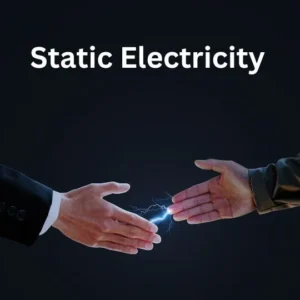Electric Charges and Fields for JEE/NEET
Introduction
The study of electric charges and fields is fundamental to understanding the nature of electricity and its many applications. This summary provides a detailed overview of the key concepts, including the nature of electric charge, Coulomb’s law, electric fields, and Gauss’s law.
Electric Charge
- Basic Property: Electric charge is an intrinsic property of matter, much like mass. It comes in two types: positive and negative.
- Quantization: Charge is quantized, meaning it exists in discrete units. The smallest unit of charge is the elementary charge (e), which is the charge of a proton or the negative of the charge of an electron.
- Conservation: Electric charge is conserved. The total charge of an isolated system remains constant, even though charges may be transferred from one object to another.

Coulomb’s Law
Coulomb’s law describes the electrostatic force between two point charges:
Magnitude: The force is directly proportional to the product of the magnitudes of the charges and inversely proportional to the square of the distance between them.
Direction: The force acts along the line joining the two charges. It is attractive for unlike charges and repulsive for like charges.
Formula:
F = k * |q1 * q2| / r^2
where:
- F is the electrostatic force
- k is Coulomb’s constant (approximately 9 x 10^9 N m^2/C^2)
- q1 and q2 are the magnitudes of the charges
- r is the distance between the charges
Electric Field
An electric field is a region of space where a charged object experiences a force.
- Source: Electric fields are created by charged objects.
- Direction: The direction of the electric field at a point is the direction of the force that a positive test charge would experience if placed at that point.
- Strength: The strength of the electric field is proportional to the force per unit charge.
- Field Lines: Electric field lines are used to visualize electric fields. They originate from positive charges and terminate on negative charges. The density of field lines indicates the strength of the field.
Gauss’s Law
Gauss’s law relates the electric flux through a closed surface to the enclosed charge:
- Electric Flux: Electric flux is a measure of the number of electric field lines passing through a surface.
- Gauss’s Law: The total electric flux through any closed surface is proportional to the total charge enclosed within the surface.
- Applications: Gauss’s law is a powerful tool for calculating electric fields in situations with high symmetry.
Electric Charges and Fields for JEE/NEET – Additional Concepts
- Conductors and Insulators: Conductors allow charges to move freely, while insulators do not.
- Electric Potential: Electric potential is the potential energy per unit charge at a point in an electric field.
- Capacitance: Capacitance is the ability of a system to store electric charge.